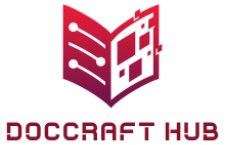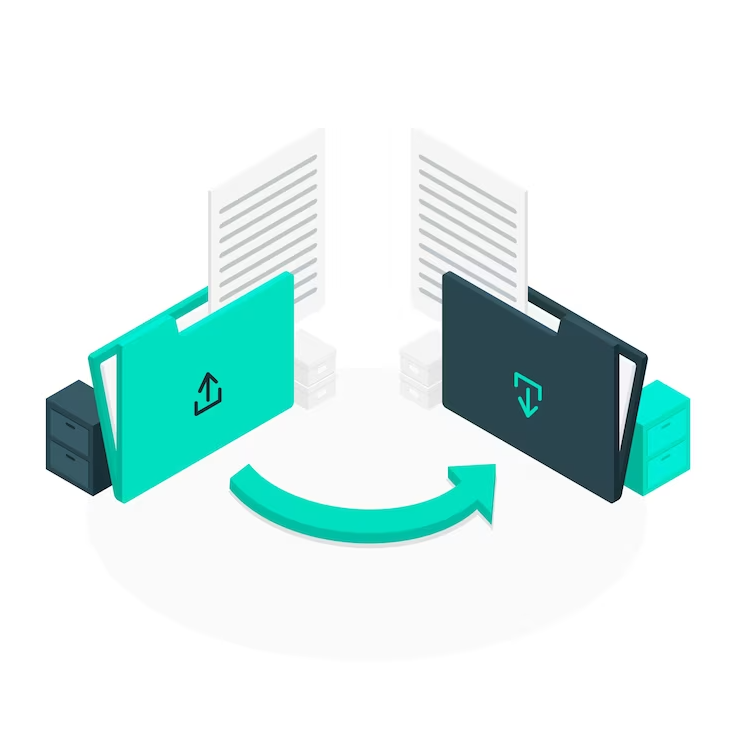Managing large amounts of documents can be a tedious and time-consuming task. Thankfully, there are now several tools available to help make the process easier. Doc converters are one such tool that can be used to merge and split documents, making them easier to organize and manage. In addition to merging and splitting documents, doc converters can also be used to extract text from images, or to convert scanned documents into editable text. This can be helpful for tasks such as creating digital copies of physical documents, or for extracting text from images for use in other documents.
Background and Context
The proliferation of digital information in today’s interconnected world has led to an unprecedented increase in the volume and diversity of documents. Documents, ranging from simple text files to multimedia-rich presentations, exist in an array of formats such as PDF, DOCX, TXT, and more. This expanding digital landscape presents challenges for efficient document organization and management.
Historically, physical documents were arranged manually in filing cabinets or libraries, but the digital era demands more sophisticated solutions. With the advent of electronic document creation and storage, the need for effective organization has become even more critical. In this context, document converters emerge as essential tools to bridge the gap between different document types and formats, enabling seamless information flow and accessibility.
The complexity of modern documents, coupled with the variety of applications and platforms used for document creation, necessitates a versatile and interoperable solution. Document converters facilitate the conversion of documents from one format to another, preserving the integrity of the content and structure. This capability becomes particularly crucial in collaborative settings, where individuals may use different software or systems for document creation, editing, and sharing.
Moreover, as organizations increasingly embrace digital transformation, the ability to organize and manage digital content becomes a strategic imperative. The challenge is not only to convert documents between formats but also to ensure that the converted documents maintain consistency, accessibility, and relevance in the evolving digital landscape.
Document Types and Formats
In the digital realm, documents come in various types and formats, each serving specific purposes and catering to diverse content needs. Understanding the landscape of document types and formats is essential for developing effective document organization solutions. Here, we delve into some common document types and formats:
Common Document Types
- Text Documents (TXT): Plain text documents are the simplest form of electronic documents, containing only raw text without any formatting or multimedia elements. They are lightweight, easily readable, and compatible with a wide range of applications.
- Portable Document Format (PDF): PDF is a widely used format for creating and sharing documents while preserving their original formatting across different platforms. PDFs can contain text, images, hyperlinks, and multimedia elements, making them suitable for various purposes, from official reports to interactive forms.
- Word Processing Documents (DOCX): Word processing documents, such as those created with Microsoft Word, typically include formatted text, images, tables, and other rich media. DOCX is a common format for collaborative writing and document creation.
- Spreadsheets (XLSX): Spreadsheets, often in XLSX format, are used for organizing and analyzing tabular data. They can include formulas, charts, and graphs, making them essential for data-driven decision-making.
- Presentations (PPTX): Presentation documents, in formats like PPTX (PowerPoint), are designed for creating slideshows with multimedia elements. These documents are commonly used for lectures, business presentations, and educational purposes.
Document Formats:
- XML (eXtensible Markup Language): XML is a versatile markup language that allows the creation of custom document structures. It is often used for data interchange between different systems and applications.
- Hypertext Markup Language (HTML): HTML is the standard markup language for creating web pages. While not a traditional document format, HTML is crucial for presenting information on the internet, and many documents are now created and shared in HTML format.
- Rich Text Format (RTF): RTF is a format that enables the interchange of formatted text documents between different word processors. It strikes a balance between plain text and more complex document formats like DOCX.
| Document Type | Common Formats | Document Converter Role |
| Text Documents | TXT | Facilitates basic conversion; may involve encoding considerations |
| Portable Document Format | Preserves complex formatting during conversion | |
| Word Processing Documents | DOCX | Ensures compatibility and consistency across word processors |
| Spreadsheets | XLSX | Manages data integrity and formatting during conversion |
| Presentations | PPTX | Preserves multimedia elements and slide structure |
| eXtensible Markup Language | XML | Translates custom structures; supports data interchange |
| Hypertext Markup Language | HTML | Converts for web compatibility and presentation |
| Rich Text Format | RTF | Maintains basic formatting across different word processors |
The Role of Document Converters:
Document converters play a central role in the digital landscape by facilitating the seamless transition of content between diverse document types and formats. Acting as intermediaries, these tools are essential for achieving interoperability across various applications, platforms, and devices. Their primary function involves translating the content from its original format to the target format while preserving the structural integrity of the document.
The preservation of document structure is critical in ensuring that the hierarchy of elements such as headings, paragraphs, and lists remains intact. Document converters also adapt content to align with the specifications of the target format, addressing differences in media types, layouts, and other presentational aspects. This adaptability is particularly valuable when transitioning documents between formats that support distinct types of media or presentation styles.
Document converters contribute significantly to enhancing interoperability by bridging the gaps between different software applications. This capability allows users to seamlessly work with documents created in one application using an entirely different application, fostering collaboration and flexibility in document management. The automation and batch processing features of document converters streamline repetitive tasks, offering efficiency gains when dealing with large volumes of data.
Furthermore, document converters play a vital role in ensuring version compatibility as software applications evolve and introduce new document formats. By enabling users to access and work with documents created in both older and newer versions of applications, these tools contribute to the continuity of document workflows and prevent data obsolescence.
In essence, the multifaceted role of document converters extends beyond mere translation, encompassing structural preservation, content adaptation, interoperability enhancement, automation, and version compatibility. Leveraging these capabilities is crucial for effective document management and organization in the dynamic and interconnected digital environment.
Document Merging: Techniques and Considerations
Document merging is a process of amalgamating multiple documents into a cohesive and unified entity, often undertaken to create comprehensive reports, collaborative projects, or compilations. This operation involves a set of techniques and considerations to ensure the seamless integration of content and the creation of a coherent final document.
Techniques for document merging encompass various approaches. Concatenation is a straightforward technique that involves appending the content of one document to another, suitable for merging documents with similar structures. Insertion allows for a more controlled merging process by integrating content at specific locations within another document, valuable for collaborative reports where different contributors contribute specific sections. Overlay, commonly used in design and publishing applications, places the content of one document over another, particularly useful for combining graphical or visual elements.
Considerations in document merging are equally critical to maintaining the integrity and coherence of the final document. Formatting consistency is paramount, ensuring that styles, fonts, and layouts remain uniform throughout the merged document. Preservation of metadata, including author information, creation dates, and version history, is crucial to maintaining a comprehensive record of the information sources. Addressing content conflicts, which may arise in collaborative environments, requires careful consideration and, in some cases, manual intervention to resolve discrepancies in information, formatting, or conflicting changes. Additionally, effective version control is essential to track changes made during the merging process, ensuring that the final document reflects the most up-to-date and accurate information from the contributing documents.




